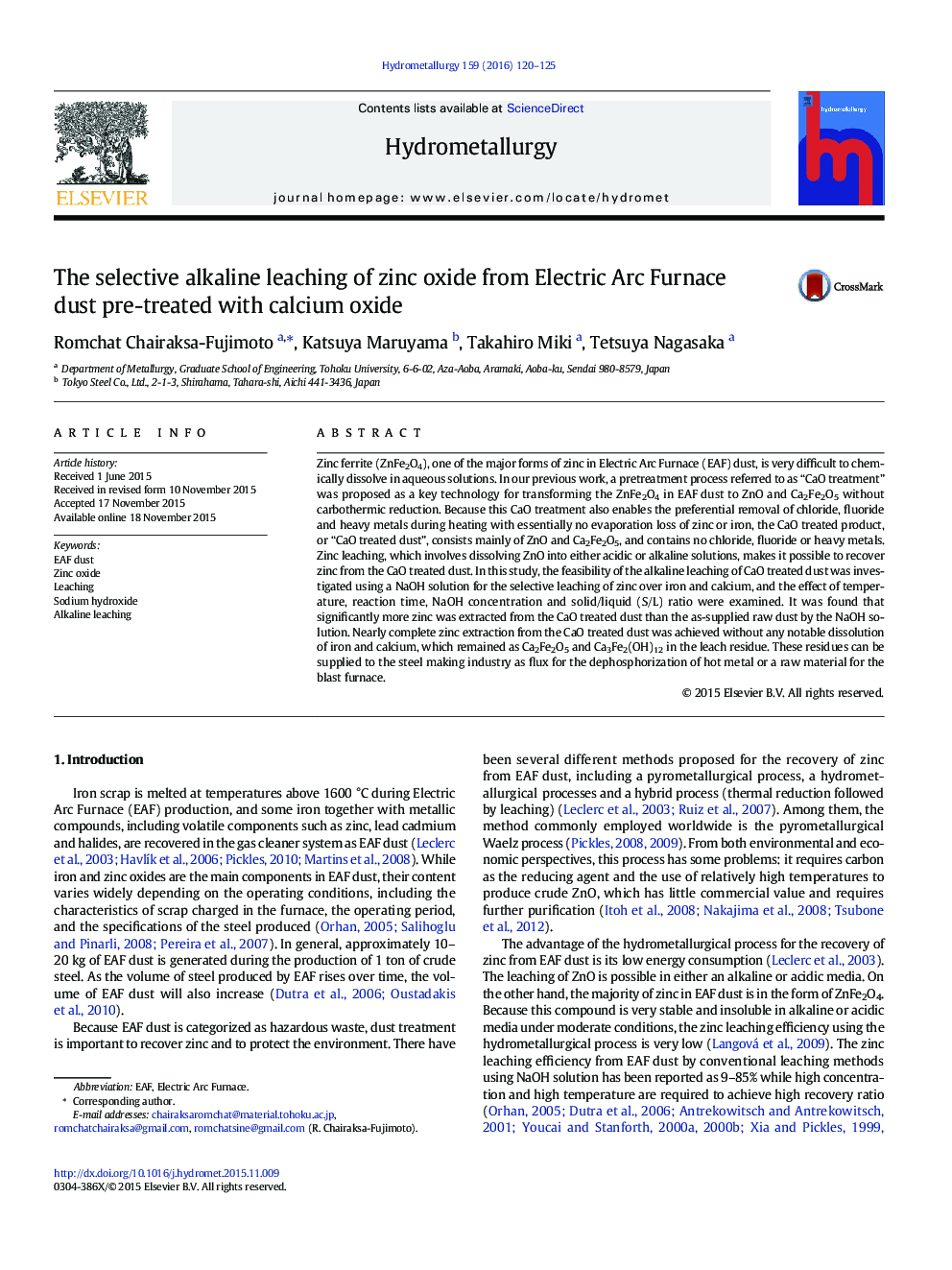| Article ID | Journal | Published Year | Pages | File Type |
|---|---|---|---|---|
| 211910 | Hydrometallurgy | 2016 | 6 Pages |
•Selective zinc leaching using NaOH solution with as-supplied EAF dust and CaO treated dust was conducted.•Zinc recovery from CaO treated EAF dust using NaOH solution was nearly complete.•NaOH solution successfully leached the zinc in the CaO treated EAF dust without the elution of calcium and iron.•Both of the leaching residues, Ca2Fe2O5 and Ca3Fe2(OH)12, can be supplied to the steelmaking industry.
Zinc ferrite (ZnFe2O4), one of the major forms of zinc in Electric Arc Furnace (EAF) dust, is very difficult to chemically dissolve in aqueous solutions. In our previous work, a pretreatment process referred to as “CaO treatment” was proposed as a key technology for transforming the ZnFe2O4 in EAF dust to ZnO and Ca2Fe2O5 without carbothermic reduction. Because this CaO treatment also enables the preferential removal of chloride, fluoride and heavy metals during heating with essentially no evaporation loss of zinc or iron, the CaO treated product, or “CaO treated dust”, consists mainly of ZnO and Ca2Fe2O5, and contains no chloride, fluoride or heavy metals. Zinc leaching, which involves dissolving ZnO into either acidic or alkaline solutions, makes it possible to recover zinc from the CaO treated dust. In this study, the feasibility of the alkaline leaching of CaO treated dust was investigated using a NaOH solution for the selective leaching of zinc over iron and calcium, and the effect of temperature, reaction time, NaOH concentration and solid/liquid (S/L) ratio were examined. It was found that significantly more zinc was extracted from the CaO treated dust than the as-supplied raw dust by the NaOH solution. Nearly complete zinc extraction from the CaO treated dust was achieved without any notable dissolution of iron and calcium, which remained as Ca2Fe2O5 and Ca3Fe2(OH)12 in the leach residue. These residues can be supplied to the steel making industry as flux for the dephosphorization of hot metal or a raw material for the blast furnace.
Graphical abstractFigure optionsDownload full-size imageDownload as PowerPoint slide
